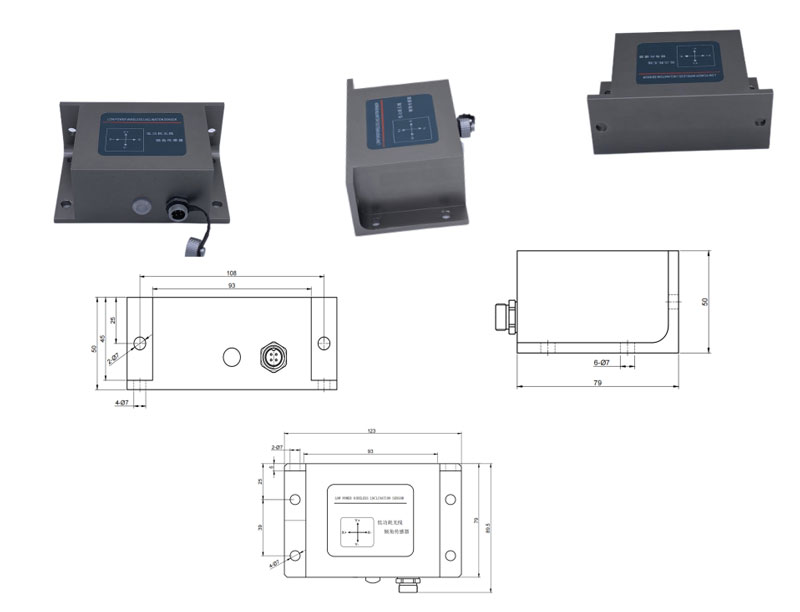Shandong Fengtu IOT Technology Co., Ltd
Sales Manager:Ms. Emily Wang
Cel,Whatsapp,Wechat:+86 15898932201
Email:info@fengtutec.com
Add:No. 155 Optoelectronic Industry Accelerator, Gaoxin District, Weifang, Shandong, China

Sales Manager:Ms. Emily Wang
Cel,Whatsapp,Wechat:+86 15898932201
Email:info@fengtutec.com
Add:No. 155 Optoelectronic Industry Accelerator, Gaoxin District, Weifang, Shandong, China

Model:FT-QJ3
Brand:fengtu
1.Wireless IOT Inclinometer Product Introduction
Wireless IOT Inclinometer is designed in one piece and can be used to monitor the incline of construction, the incline of unsafe buildings and other incline automation.Low-power wireless inclination sensor and wireless inclinometer are high-performance, highly integrated, intelligent, low-power products. They are tilt angle measurement devices based on NB-iot narrowband IoT and 4G/GSM transmission. They are unique, innovative, and highly integrated. The product uses the latest all-network IoT wireless chip and the IoT cloud platform to realize remote data collection, monitoring, analysis, inspection, alarm, classification, geographic location, data report curve download, and mobile devices such as mobile phones. APP software can realize monitoring and alarm functions anytime and anywhere. Using the standard MODBUS/TCP standard communication protocol, this product is based on a microprocessor and can reliably realize the collection and processing of signals such as inclination, horizontal displacement, and power, and can realize functions such as timed data reporting and triggered reporting.
2. Wireless IOT Inclinometer Dimensions

3. Wireless IOT Inclinometer Main Features
Dual-axis inclination detection
Range ±30°
Output interface RS485
Working voltage DC3.6V
Scheduled reporting and triggered reporting
Accuracy 0.01°
Built-in horizontal displacement calculation function
Resolution 0.001°
Response frequency 100Hz
Shock resistance>20000g
Wide operating temperature range -40~+85℃
Protection grade IP67
4. Wireless IOT Inclinometer Application Fields
High voltage power tower monitoring
Railway locomotive monitoring
Comprehensive Pipeline Gallery
Ancient trees and electric towers
Subway tunnels, geological disaster slopes
Bridge and foundation pit measurement
Houses and ancient buildings
5. Wireless IOT Inclinometer Technical Parameters
| Range | Inclination ±30° |
| Measuring axis number | Dual axis (X/Y) |
| Accuracy | 0.005~0.01° |
| Horizontal displacement | Built-in solver |
| Network Standard | NB-IoT (B1/B3/B8/B5/B20/B28), 4G GSM full network access |
| antenna | Built-in |
| Sampling interval | Can be set arbitrarily in seconds. If real-time acquisition is required, set to 0 |
| Upload interval | Can be set arbitrarily in minutes, the fastest is 1 minute, if real-time online is required, set to 0 |
| Wake-up mode | Timing and trigger alarm wake-up |
| Configuration Mode | Local configuration/remote configuration |
| Upload information | Tilt angle, horizontal displacement data, battery information, network status, self-test status, signal strength, alarm information, etc. |
| powered by | 3.6V@19Ah one + one super capacitor, external power supply optional |
| Power consumption | Standby current ≤50uA, average sending current ≤100mA |
| Operating temperature | -30℃~70℃ |
| Storage temperature | -40℃~85℃ |
| vibration | ≤3g/10Hz...150Hz (IEC 60068-2-6-2007) |
| Protection level | IP67 |
| communication | RS485 |
| Shell material | Aluminum alloy shell |
| Installation | Horizontal installation |
weather measuring instruments and their uses are scientific and technical equipment specially used to observe, measure and monitor weather and climate, mainly thermometer, barometer, rain gauge, wind vane, anemometer and so on....
In this day and age, the importance of water resources cannot be overstated, as it is a basic condition essential to the survival of human beings and living things. Water pollution and continuous consumption of water resources become more and more scarce, which puts forward serious problems and chal...
Automatic weather stations are widely used in China, not only in agricultural management, but also in industrial production, open-air stacking of materials, environmental monitoring, traffic safety, meteorological early warning and other fields. With the continuous improvement of science and technol...
Radar water level monitoring station manufacturer - Windway Technology, a domestic manufacturer of radar water level monitoring station, can choose the right products according to different engineering needs in order to meet the needs of different areas of water level observation accuracy and reliab...